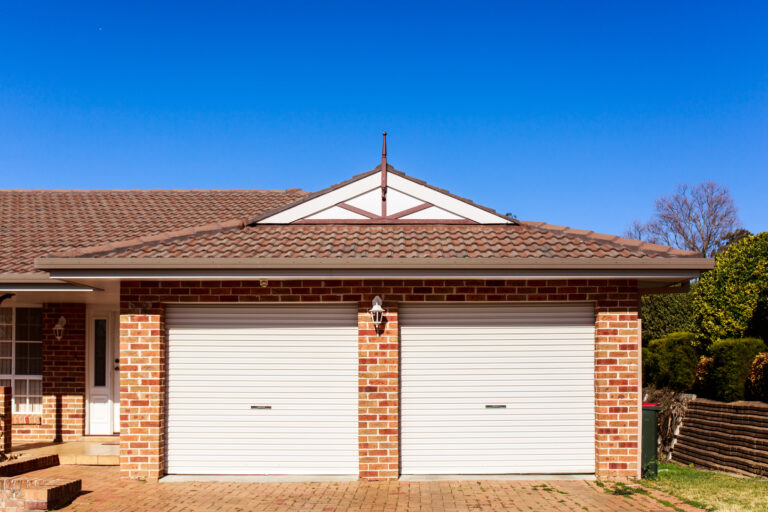Whether freshening up your living room or protecting your home’s exterior, understanding the difference between interior and exterior paint is critical. These two types of paint are formulated for distinct environments, and using the wrong one could lead to peeling, fading, or even health issues. Let’s explore what makes interior and exterior paint unique and how to make the right choice for your next painting project.
Key Takeaways
- Exterior and interior paint use different resins, with exterior paint containing tougher materials for weather resistance, while interior paint focuses on smooth finishes and low VOC levels for safe indoor air quality.
- Latex paint is commonly used for interior projects due to its quick drying time and ease of cleaning, whereas oil-based paints offer superior protection for exterior surfaces exposed to harsh weather.
- Exterior paints have higher VOCs and are specifically designed for outdoor durability, making them unsuitable for indoor use.
- Using the correct paint ensures longevity and prevents issues like peeling, cracking, or fading, depending on the project and the environment.
- Proper preparation, such as cleaning and priming surfaces, ensures that both interior and exterior paints adhere well and provide long-lasting results.
What is Interior Paint?
Interior paints are designed specifically for indoor use. These paints are formulated to handle minimal exposure to moisture, UV light, and temperature shifts. When painting your interior walls, it’s essential to use a product that offers durability, smooth finishes, and the ability to resist stains. One major benefit of interior paints is that they contain low levels of volatile organic compounds (VOCs), which makes them safer for your indoor air quality.
Most interior paints are water-based paints, like latex paint, which makes them easier to clean with soap and water. They are designed to provide smooth application on interior surfaces, and you can choose from various gloss levels, ranging from matte to semi-gloss, depending on the room’s function.
However, interior paints aren’t built to withstand outdoor conditions such as rain, extreme temperatures, or direct sunlight. Applying interior paint to exterior surfaces will lead to rapid wear, fading, and peeling, making it unsuitable for outdoor use.
What is Exterior Paint?
Exterior paint, by contrast, is built tough to handle harsh outdoor conditions. When you’re working on exterior projects, like painting wood siding or exterior walls, you’ll need a product that can stand up to elements such as rain, snow, and intense heat. Exterior paints contain stronger binding resins and rigid resins, which allow them to resist peeling, cracking, and fading, even in extreme temperatures.
These paints are also formulated with added UV resistance, which helps them withstand direct sunlight without fading. Exterior paints inside the home, however, aren’t a great idea. They contain higher levels of VOCs and chemicals designed for outdoor durability, making them potentially harmful to breathe indoors. Additionally, the oil-based paints and acrylic paints used for exterior applications are meant to endure different environments and can be too harsh for enclosed spaces like living rooms or bedrooms.
Key Differences Between Interior and Exterior Paint
The basic components of interior and exterior paints are tailored for their respective environments. Interior paint is formulated for aesthetic appeal and easy maintenance, providing a smooth finish that can handle frequent cleaning without wearing down. However, interior paint isn’t always mold or mildew-resistant, making it less suitable for areas prone to moisture without proper precautions. These paints use softer resins, allowing them to adhere smoothly to indoor surfaces and create a polished look on interior walls.
Exterior paint, on the other hand, is formulated to handle outdoor challenges. It includes stronger binding resins that allow it to resist peeling, cracking, and fading from UV rays and other environmental stressors. Unlike interior paint, exterior paint needs sunlight to properly cure, ensuring its durability over time. Oil-based paints, commonly found in exterior paint products, offer exceptional stain resistance and perform well in harsh climates. However, they take longer to dry and emit stronger fumes, making them a poor choice for indoor use.
Can You Use Exterior Paint Indoors?
While it might seem convenient to use exterior paint indoors, it’s not advisable. Exterior and interior paints are formulated with different purposes in mind, and using exterior paint inside could expose you to high levels of volatile organic compounds (VOCs), which can lead to poor indoor air quality. Furthermore, exterior paint may not adhere smoothly to indoor surfaces, resulting in a rough or uneven finish.
If you’ve already applied exterior paint indoors, ensure the room is well-ventilated until the paint dries. However, it’s always safer to stick with indoor paints for future projects to avoid health risks and achieve a better finish.
Choosing the Right Paint for Different Surfaces
Selecting the appropriate paint type for your project depends heavily on the surface you’re painting. Interior paints are perfect for areas like interior walls, ceilings, and trim. These paints provide a smooth finish and are easy to clean, making them ideal for spaces that require frequent upkeep. Latex or acrylic paints are popular choices for indoor projects, as they are quick to dry and low in VOCs, minimizing health risks.
For exterior surfaces, such as wood siding or brick, durability becomes the top concern. Exterior paints are designed to protect against the elements, such as rain, snow, and UV rays, which can cause fading or damage to outdoor surfaces. Oil-based paint is particularly effective for these projects due to its resilience and stain resistance.
Understanding Paint Finishes and Their Uses
Both interior and exterior paints come in a range of gloss levels, which makes them versatile for different types of projects. For example, semi-gloss finishes are great for areas like bathrooms and kitchens, where frequent cleaning is necessary. For exterior projects, a semi-gloss finish also helps protect surfaces like doors and trim from dirt, rain, and UV damage.
When it comes to painting larger exterior surfaces, such as walls, flat or satin finishes are typically preferred. These finishes offer a more subtle sheen while still providing durability. House paint used on exteriors often comes in these finishes to give a balanced combination of durability and aesthetic appeal.
Making Your Paint Job Last
The key to a long-lasting paint job is not just choosing the right product but understanding how the paint will perform over time. Latex paints and water-based paints dry quickly, which makes them ideal for interior projects where you need a quick turnaround. However, these paints may not offer the same longevity as oil-based paints on exterior surfaces. In areas that are exposed to heavy traffic or harsh conditions, oil-based or hybrid paints are often a better choice.
Don’t forget to use tools like painter’s tape to ensure clean edges and avoid smudging when working with different paints on the same surface.
The Importance of Preparation
No matter the surface you’re painting, proper preparation is essential for a smooth, long-lasting finish. For both interior and exterior surfaces, ensure the areas are clean, dry, and properly primed before applying paint. This will help the paint adhere better and prolong its durability. For oil-based paints, remember that mineral spirits are necessary for clean-up.
For exterior projects, always consider weather conditions before painting. Rain, humidity, or extreme heat can negatively affect how the paint dries, potentially ruining your paint job. Plan to paint on mild, dry days for the best results.
Conclusion
Choosing the right type of paint—whether for interior or exterior applications—is essential for ensuring durability, longevity, and aesthetic appeal. By understanding the specific needs of each surface and environment, you’ll be better equipped to select the best product for the job. Whether you’re tackling interior walls or taking on a large exterior project, proper preparation and the right paint choice will ensure your work stands the test of time. If you’re still unsure about which paint to use, OnDemand Painters is here to help guide you through the process and deliver expert advice for achieving the perfect finish.
FAQ
What’s the main difference between interior vs exterior paint?
Interior paint is designed for smooth application and easy cleaning, while exterior paint is built to withstand harsh weather conditions.
Can I use exterior paint indoors?
It’s not recommended because exterior paint contains more VOCs and may not be safe or look appropriate inside.
How do interior paints differ from exterior paints when it comes to mold resistance?
Interior paints differ in that they are not always mold or mildew-resistant, whereas exterior paints often include additives to protect against moisture and mold growth.
Is acrylic paint suitable for both exterior and interior projects?
Yes, acrylic paint is versatile and can be used for both exterior and interior paint projects due to its durability and ability to withstand weather conditions.
What is the best exterior paint for long-lasting durability?
The best exterior paint is typically acrylic or oil-based, as these options provide excellent weather resistance, protection against UV rays, and durability in varying temperatures, ensuring long-lasting results.



















